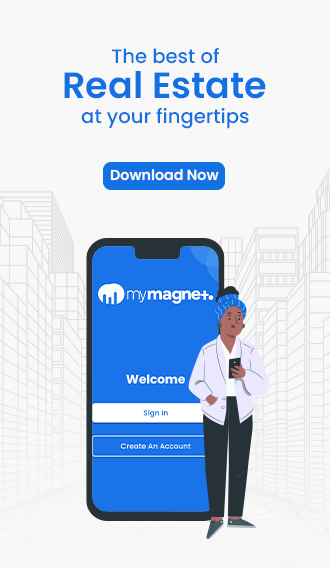The shelter has always been one of the fundamental human needs, but the coronavirus outbreak and the following lockdown made it even more essential. During the lockdown, the home served as an office, recreation zone and so much more all in one. The need of the time demanded social distancing, cleanliness and limited interaction which gave a boost to technology functions that were nice-to-have to must-have for the real estate sector.
Initially, when the COVID-19 crisis began, the real estate industry saw a massive downfall in sales and thus they had to figure out a way to reach prospective home buyers without having in-person contact. That’s when the real estate sector entered the virtual tour and potential buyers started to have access to their first glimpses of homes via smartphone or laptop connected by zoom or FaceTime. Digital walkthroughs were created that could be played and replayed from anywhere at any time. These walkthroughs were taken from different angles of the properties along with the option to fill a space with virtual furniture.
Virtual tour feature in listings is now considered standard practice due to the growing need for technological advancements, which only gained popularity during the social distancing phase. Property buyers are not only able to take virtual tours of properties but are also provided with information on the property’s history and the surrounding infrastructure. Instead of relying on word-of-mouth, information is now available digitally and with total transparency. As a result, information on the location of the neighbourhood markets, hospitals, schools, colleges, sports complexes, railway stations, bus stops, metro stations, a Wi-Fi service provider, internet access, and other things are easy to find. Similarly, this will help sellers and brokers to understand the
customer’s preferences and to reach potential buyers without much delay.
Overall, the use of digital solutions minimises bias, eliminating guesswork, bringing transparency and streamlining the entire transaction process. Recently, people are adapting to smarter ways of living, working, driving, vacationing and other activities. Although real estate has lagged behind, the change is now
simplifying everyone’s lives.
But now that the pandemic is over, will virtual tours still advance to become the industry standard? Here is a summary of the most recent trends in virtual home purchasing.
Do property virtual tours have a future?
Yes, but perhaps not for the same reasons that we had at the time when the pandemic was at its worst. People will probably continue to be cautious about the possible health risks of letting strangers into their homes and visiting properties in the years to come. Nonetheless, if present public health trends continue, this
level of caution will probably not be as substantial as it was prior to vaccinations and reduced case rates.
In contrast, many home buyers have now recognised the value of what was formerly a necessity. Virtual tours will continue to exist since home buyers are used to them. Many buyers who would otherwise be unable to take an in-person tour either because of time restrictions or geographic distance find the new forms
of media to be useful.
Both virtual and in-person tours have their benefits
Whereas the real estate industry is moving toward a more digital environment, in-person sales still have their place and time. Many home buyers will want to take the time to personally view homes before making a decision since all will not feel comfortable buying homes virtually. Potential buyers can check out a house
in person by opening drawers and closets, testing the water pressure and viewing a variety of other details that a camera can’t capture.


